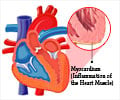European Society of Cardiology recently launched the exercise and sports guidelines for people with all types of heart diseases.
- Heart disease patients need to exercise for 150 mins per week with moderate-intensity exercise
- People at a high risk of heart disease need to do strength-building exercise with moderate aerobic exercise
- Patients with coronary artery disease and a pacemaker need to consult a doctor to tailor the activity according to the individual's condition
- Atrial fibrillation can be prevented with regular, moderate physical activity
Read More..
Exercising regularly not only prevents heart disease but also reduces premature death in heart disease patients.
Professor Sanjay Sharma says that the chance of exercise triggering a cardiac arrest is extremely low. People who are completely inactive and patients with advanced heart disease need to consult their doctor before doing sports.
Topics Covered in the Document
Leisure exercise and competitive sports for heart diseases patients are covered in the document.
Advice is given on exercise during pregnancy or in a special setting like high altitude, in polluted areas, in deep-sea and at extreme temperatures.
Heart disease patients should exercise for at least 150 minutes per week which includes moderate-intensity exercise.
Moderate intensity exercise generally refers to an exercise which increased the heart rate and breathing rate. However, the person will still be able to have a conversation.
People with obesity, hypertension, or diabetes, need to do a strength-building exercise at least three times a week. Additionally, moderate, or vigorous aerobic exercise like cycling, running or swimming is necessary.
The most common type of heart disease is coronary heart disease. It is caused by the build-up of fatty deposits on the inner walls of the arteries. It can lead to a heart attack if the arteries are completely blocked.
Most people with coronary artery disease can either play amateur or competitive sports.
They need to consult their doctor first to tailor the intensity of the activity based on the individual's risk of a heart attack.
Atrial fibrillation is a common heart rhythm disorder. Regular or moderate physical activity is recommended to prevent atrial fibrillation.
Atrial fibrillation patients taking anticoagulants should avoid contact sports due to the risk of bleeding.
Patients with a pacemaker should not be discouraged from playing sports, except collision sports. However, based on the underlying disease, the person should tailor their choice.
A person experiencing chest pain for longer than 15 minutes should immediately call the ambulance.
If a person experiences unusual shortness of breath or palpitations, it is recommended to scale back the activity and make an appointment with a health professional.
Professor Sharma concluded that physical activity is good for everyone with heart disease, and even small amounts are beneficial. The researchers hope these guidelines will help patients and their health professionals choose the best and most enjoyable activities for them.
Source-Medindia
















